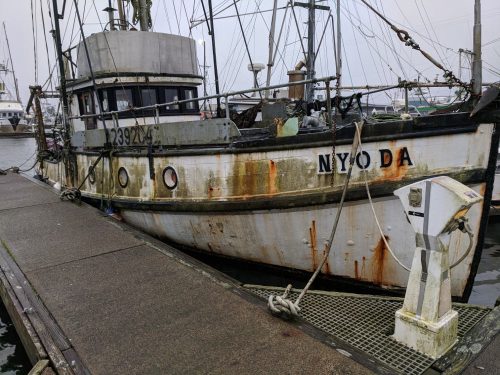My brother Jim just had to remind me of a fishing trip we took in our youth, when my father took all of us out on a charter boat out of Westport, and my sister Caryn got seasick and puked in her hat, and my dad caught a big ol’ 40 pound king salmon, it was a marvelous outing, many Shubs and Zuuls knew what it was to be roasted in the depths of a Sloar that day, I can tell you!
Anyway, he only wrote to tell me that the boat we were on, the Nyoda, is in the news.
Bold said the port will pay Global Diving and Salvage $80,000 to remove them, 90% of that will be reimbursed by the state’s Derelict vessel removal program. “The owners of both vessels have abandoned them and the port has ceased both. The vessels were offered for bid at [a] public auction, however, no bids were received.”
Once they are removed it’s not likely that either boat will see the water again. Bold continued, “Both have deteriorated hulls and are leaking. The port, as the marina operator, is responsible for removal and disposal.”
Dang. That boat could be a metaphor for me.






